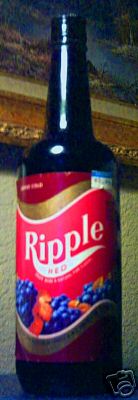Book Review: 'Metrophage' by Richard Kadrey
5 / 5 Stars
‘Metrophage’, released in 1988, was one of the 12 ‘New’ Ace Science Fiction Specials published between 1984 and 1990. The cover art is by Earl Keleny.
Metrophage is a ‘first generation’ cyberpunk novel that, stylistically, belongs with members of the Canon such as 'Count Zero', 'Neuromancer', 'Dr Adder', and 'Islands in the Net'.
With its near-future, dystopian Los Angeles setting, 'Metrophage' is a direct descendent of Jeter's ‘Dr Adder’, which was written in the early 70s (but not published till 1984).
Metrophage is set in a chaotic, partially destroyed LA, early in the 21st century. The city is divided into small clusters of wealth and affluence, and a larger, impoverished metropolis, peopled by various tribes of techno-enthusiasts, scavengers, self-styled anarchists, and ethnic groups.
The hero is one Jonny Qabbala, a street punk who supports himself by selling drugs and moving contraband for the Smuggler Lords, the de facto rulers of L.A.
As the novel opens, Jonny is looking to avenge the death of one of his friends at the hands of Easy Money, another dealer. Impulsive and prone to making bad decisions, Jonny soon runs afoul of Colonel Zamora, the head of the city police force; this is a quasi-facist oganization that periodically sweeps into the city to engage in combat with its less tractable inhabitants.
On the run from Zamora, Jonny becomes entangled in a vast, but secretive, underground conflict being waged between offworld economic blocs, and the militant, far-right organizations formed in the aftermath of the collapse of the US and Europe.
Complicating things is the rise of a disturbing new plague, a plague that in fact may be a bioweapon loosed in a deliberate effort to eliminate the lumpen proletariat from LA.
Self-centered and indifferent to the welfare of the common people, Jonny is not inclined to get involved in efforts to arrest the outbreak. But he may have no choice but to become involved, because Jonny may hold the only hope for a cure for the plague….. if he can live long enough to discover where it came from….
Metrophage is a worthy cyberpunk adventure, less so because of its plot, which is often meandering, and heavily reliant on contrivances to provide it with some degree of momentum.
Rather, the appeal of Metrophage is author Kadrey’s careful imagery of a near-future LA resembling a cross between ‘Blade Runner’ and Mad Max: Beyond Thunderdome’. The novel is filled with offbeat, imaginative visual vignettes.
As well, Kadrey’s dialogue is well-written and melds nicely with a cast of quirky characters: the smuggler lord Mister Conover, kept alive into advanced age by regular pharmaceutical infusions; Nimble Virtue, the L5 colony expatriate forced to travel LA in an exoskeleton that moves her atrophied limbs; Man Ray, the anarchist weaponsmith; and Groucho, the idealistic leader of the LA anarchists.
Metrophage shares the same faults as ‘Neuromancer’: a prose style that at times is too dense and descriptive; a plot that relies overmuch on nick-of-time escapes to get our hero out of his self-inflicted jams; and final, last-chapter revelations that don’t seem to justify all the sub-plots circulating in and out of the main narrative.
But its imaginative drive outweighs these drawbacks, and Metrophage rightly stands as one of the best of the first-generation cyberpunk novels.





















































.jpg)






















